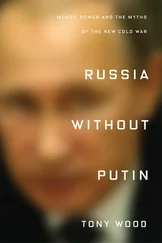This deficit can be explained partly by America's comparative advantage in high technology, where core research and design are carried out in the US, while lower value manufacturing and assembly have been offshored to lower cost locations. Apple is a classic example of this. A China-assembled iPad that is sold in the US for $499 generates only around $8 for Chinese labour. 12 In contrast, the Chinese market has generated huge profits for American companies such as Boeing, Nike, Starbucks and Disney. 13
That is not to say that the US does not have valid grievances against China in areas of trade and financial policy. Foreign businesses operating in China have long complained that Chinese government policies discriminate against them, citing lack of regulatory transparency; inadequate protection of intellectual property; difficulty obtaining local licenses; and limited protections for their commercial secrets. There is a strong case that there is indeed a highly uneven playing field for foreign businesses in China. 14 Given China's high level of domestic savings, there is also a legitimate complaint about the asymmetry between the relative ease of foreign investment into China's capital markets and the still-limited channels for foreign companies to raise capital from Chinese investors.
Many of these issues arise from the fact that China continues to feature a relatively overbearing state. This and continuing shortcomings in the transparency and consistency of the legal and regulatory system are problems that China's growing population of private businessmen and entrepreneurs also increasingly chafe against. The strength of Hong Kong's IPO market provides a good illustration of this. HKEX has been the top IPO venue globally in five of the 10 years up to the end of 2020, with Mainland Chinese companies accounting for 85 percent of the funds raised over that period. 15 Although Chinese businesses seeking to raise money from public markets would reap far higher valuations by listing in Shanghai (上海) or Shenzhen (深圳), 16 many private businessmen still prefer to IPO their companies in Hong Kong. The reasons for this include Hong Kong's relatively reliable legal and regulatory system; the ability for them to raise funds in a currency that is easily convertible; and the desire to protect their wealth from the Chinese authorities by moving part of it offshore.
The Chinese government is not unaware of the many problems and has been pursuing gradual reforms. Many of these reforms have been market-oriented and have better aligned China's practices with international norms, including the lowering of barriers to capital flows between China and international markets. However, given the flaws in the US financial and economic model highlighted by the GFC, many in China's leadership have become even more sceptical than before about US free market ideology. To successfully bring about further financial and economic reforms now, the case needs to be stronger than in the past. US coercion has had some impact but is likely to be met with continual resistance. Ultimately, it is likely that domestic forces will be the most effective in pushing the Chinese government towards change.
In the aftermath of the GFC, Chinese officials have no doubt displayed some level of conceit and a greater degree of assertiveness in their interactions with other countries. 17 Following President's Xi Jinping's (习近平) coming to power in 2012, China has also stepped up the scale of its international ambitions, notably through the Belt and Road Initiative (BRI, 一带一路), a grand infrastructure development strategy encompassing a large number of developing countries and trading partners. China's Made in China 2025 (中国制造 2025) strategy also seeks to upgrade China's industrial base from low value export manufactures to high technology value products and services. To a great extent, these initiatives are a far-sighted recognition, triggered by the GFC, that China cannot indefinitely depend on growth in exports to Western markets in light of the structural economic headwinds that those countries face. However, China's increasing international ambitions have been seen as a threat to the US, particularly as Xi's administration appears to be centralising more power within the CCP.
Since the Trump Administration launched its trade war with China in January 2018, the scope of the conflict has been widened from a pure focus on trade and tariffs. Sanctions have been applied against Chinese technology companies. US allies have been pressured to remove Chinese manufactured components from their telecommunications networks on national security grounds. Further, Chinese companies from sensitive sectors have been denied access to US capital markets. Officials from both countries have recently hurled incendiary accusations at each other and engaged in an unseemly war of words over the origins of the Covid-19 pandemic and interference in Hong Kong affairs. 18 Some commentators believe that the US and China have entered – or are entering – into a ‘New Cold War’ or ‘Cold War II’. 19 Some have even gone so far as to suggest that there are reasons to welcome this, believing that multidimensional Great Power competition will provide an impetus for human progress and help the US confront its recent political dysfunction. 20
The Financial Roots of Sino-US Conflict
This book rejects the notion that the current Sino-US conflict is a New Cold War for three reasons.
First, there is a critical difference in the factors underlying tensions between China and the US today and those that precipitated the 20 thcentury Cold War. In the late 1940s, there was no meaningful trade or investment between the US and the Soviet Union that could give rise to frictions. The primary driver of the Cold War was ideological, whereas financial factors have played a major role in stoking current Sino-US tensions. While it is undeniable that there are significant ideological differences between China and the US, far from seeking the overthrow of global capitalism, China has adopted significant aspects of the capitalist economic model and, although it has not fully embraced America's brand of free market ideology, it is today no more socialist than a great many European social democracies. These hardly present a threat to America's capitalist way of life.
Second, the Cold War was characterised to a great extent by strategic disengagement between the two principal protagonists, as both worked in parallel to demonstrate the superiority of their respective economic models. Since there was virtually no economic relationship to begin with, there was little to lose. In contrast, given the high level of economic interdependence between China and America today, disengagement – or ‘decoupling’, as some would have it – would be highly damaging to both nations’ prosperity. That is even if complete disengagement were actually possible. Globalisation has interwoven and integrated economies and supply chains around the world to an extent that would make a decoupling between China and the US not only economically damaging but also quite likely to lead to a cascading set of conflicts with other countries. Australia, against which America runs balance of payments surpluses, can afford to pay for US imports due, in large part, to the surpluses it runs versus China. 21 Ironically, therefore, Sino-US disengagement could compound existing economic stresses and elevate the risk of hostilities ratcheting up.
Third, to the extent that a state of ‘Cold War’ exists today, it is hardly ‘new’. A central theme of this book is that widening wealth and income inequality in both countries has been a major factor underlying current Sino-US tensions. At the root of rising inequality are the cumulative imbalances created by the structure of the global financial system and national economic policies, which have built up over many decades. That is not to say that there are not other sources of tensions between the two countries. Great Power relations are inextricably tied to historical contexts and are influenced by numerous internal and external factors, as well as the characters of political leaders. Some focus on a schism between America's liberal democracy and China's one-party state. However, while this difference in political models is a determinant of how the two societies individually operate and can be mobilised, it is not in itself an inherent source of conflict. Instead, throughout the history of human civilisation, the division of material wealth and resources between and within societies has repeatedly been found at the heart of major clashes, and this is the dimension of Sino-US relations on which this book is focused.
Читать дальше












